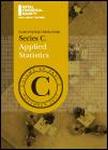版权所有:内蒙古大学图书馆 技术提供:维普资讯• 智图
内蒙古自治区呼和浩特市赛罕区大学西街235号 邮编: 010021

作者机构:Univ Florida Dept Biostat 2004 Mowry Rd Gainesville FL 32611 USA H Lee Moffitt Canc Ctr & Res Inst Dept Immunol Tampa FL 33612 USA Univ Pittsburgh Dept Biostat Pittsburgh PA 15260 USA
出 版 物:《JOURNAL OF THE ROYAL STATISTICAL SOCIETY SERIES C-APPLIED STATISTICS》 (皇家统计学会志,C辑:应用统计学)
年 卷 期:2022年第71卷第2期
页 面:352-375页
核心收录:
学科分类:0202[经济学-应用经济学] 02[经济学] 020208[经济学-统计学] 07[理学] 0714[理学-统计学(可授理学、经济学学位)]
基 金:NIH [2R01AI067846 R01CA190766 R01MH111601 R21LM012752]
主 题:disease subtype outcome-guided clustering phenotypic data sparse K-means transcriptomic data
摘 要:The discovery of disease subtypes is an essential step for developing precision medicine, and disease subtyping via omics data has become a popular approach. While promising, subtypes obtained from existing approaches are not necessarily associated with clinical outcomes. With the rich clinical data along with the omics data in modern epidemiology cohorts, it is urgent to develop an outcome-guided clustering algorithm to fully integrate the phenotypic data with the high-dimensional omics data. Hence, we extended a sparse K-means method to an outcome-guided sparse K-means (GuidedSparseKmeans) method. An unified objective function was proposed, which was comprised of (i) weighted K-means to perform sample clusterings;(ii) lasso regularizations to perform gene selection from the high-dimensional omics data;and (iii) incorporation of a phenotypic variable from the clinical dataset to facilitate biologically meaningful clustering results. By iteratively optimizing the objective function, we will simultaneously obtain a phenotype-related sample clustering results and gene selection results. We demonstrated the superior performance of the GuidedSparseKmeans by comparing with existing clustering methods in simulations and applications of high-dimensional transcriptomic data of breast cancer and Alzheimer s disease. Our algorithm has been implemented into an R package, which is publicly available on GitHub ( ).